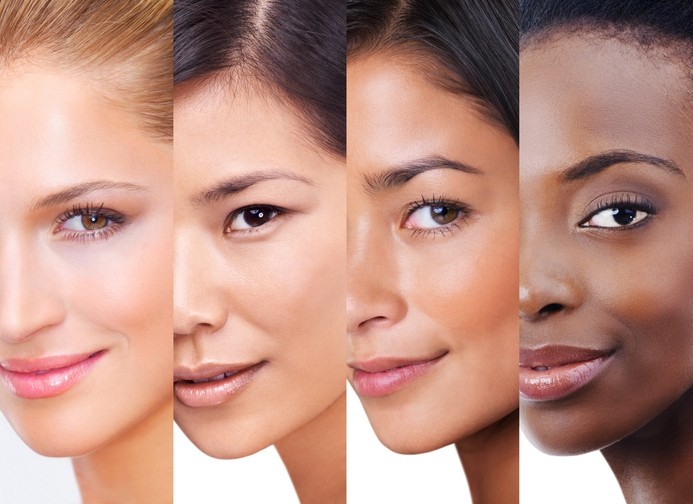Beyond shades: Inclusivity in the beauty industry

Dr Chytra Anand
In recent years, the beauty industry has undergone a transformative shift towards embracing diversity in all its forms. While skin tone inclusivity has been a focal point, the industry is now making strides in addressing a broader spectrum of considerations, such as skin conditions, age, and gender identity. This shift not only reflects a growing awareness of the diverse beauty needs of consumers but also a commitment to inclusivity that goes beyond surface-level representation.
Understanding the shift
The beauty industry has traditionally been criticised for its lack of inclusivity, with many consumers feeling overlooked due to limited shade ranges and a narrow focus on conventional beauty standards. However, recent efforts have demonstrated a commitment to change. This highlights the economic imperative for the industry to broaden its offerings to cater to a more diverse customer base.
Skin conditions
One noteworthy aspect of the beauty industry’s evolving approach is its increasing attention to individuals with various skin conditions. Brands are recognising the need for products that address concerns such as acne, rosacea, and eczema. By incorporating ingredients known for their soothing and healing properties, the beauty industry is taking a step towards prioritizing skincare solutions that go beyond aesthetics.
Age inclusivity
Another aspect gaining momentum is age inclusivity. The beauty industry has long been criticized for its youth-centric focus, but a shift is occurring as brands recognize the purchasing power and beauty needs of older consumers. Statistics from AARP indicate that by 2050, individuals over the age of 50 will represent over 21% of the global population. Brands have made significant strides by featuring mature models in their campaigns and developing products tailored to the specific skincare concerns of older individuals. This acknowledgment of the diverse beauty needs across age groups challenges the industry’s historically ageist approach.
Gender identity
Gender inclusivity has become a crucial consideration in beauty product development. Recognizing that beauty knows no gender, brands are increasingly moving away from traditional binary marketing. The rise of gender-neutral skincare and makeup lines, such as Fluid and Non Gender Specific, reflects a commitment to providing products that resonate with individuals regardless of their gender identity. By breaking away from the constraints of traditional beauty norms, the industry is fostering a more inclusive and affirming environment for consumers of all gender identities.
Sustainable beauty
The beauty industry is also recognizing the importance of sustainable practices. Consumers, especially those seeking products tailored to their diverse needs, are increasingly mindful of the environmental impact of beauty products. Brands are incorporating sustainability into their formulations and packaging, aligning with the values of eco-conscious consumers. This holistic approach not only addresses the diverse beauty needs of individuals but also acknowledges the interconnectedness of personal care and environmental responsibility.
Moreover, the beauty industry’s commitment to inclusivity is influencing other sectors, sparking a broader cultural shift. Fashion, entertainment, and advertising are following suit, challenging long-standing norms and fostering a more inclusive representation across all facets of society. As the beauty industry continues to evolve, it is not merely redefining standards of beauty but contributing to a transformative movement that celebrates diversity, sustainability, and authenticity in every aspect of our lives.
Brands leading the way
Diversity and inclusivity in the beauty industry are now extending to ethnic considerations, sparking important conversations about representation. Despite comprising two-thirds of the global population, skin of colour is underrepresented, with less than 8% representation in the beauty industry.
Acknowledging this disparity, brands are initiating crucial conversations and movements to address the specific needs of individuals with skin of colour. Skincare formulations tailored to the unique characteristics of Indian skin and other skin of colour are gaining prominence, reflecting a commitment to inclusivity that goes beyond surface-level representation.
The road ahead
While these developments are promising, there is still work to be done. The industry must continue to challenge stereotypes and prioritize authentic representation in marketing and product development. Ongoing collaboration with diverse communities and the inclusion of their voices in decision-making processes will be instrumental in fostering meaningful change.
The beauty industry’s move towards inclusivity is a positive step forward, acknowledging that beauty is multifaceted and unique to individuals. Beauty brands are not only meeting the demands of an evolving market but also contributing to a more inclusive and empowering beauty culture. As consumers continue to advocate for diversity and authenticity, the industry’s commitment to addressing these considerations will likely define its success in the years to come.
Dr Chytra Anand, Dermatologist & Founder of SkinQ and Kosmoderma Clinics

